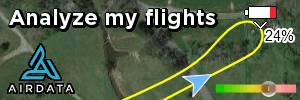It might work if the sensors could detect IR. There are drones with IR sensors which are purpose-built to detect body-heat for search operations and wildlife counts, etc., but I've never been impressed by the quality of the images they capture. Most just appear as blobs of light against a dark background.
The sensors on most camera drones are intended for observation, photography, and video only at visible-light wavelengths. Obstacle-avoidance sensors are probably similarly calibrated, so I doubt that they'd also be sensitive to IR or UV or any other wavelengths outside the visible spectrum. If the sensors were also sensitive to IR, then the imagery they detect would be impaired because IR wavelengths refract differently than visible wavelengths as they pass through the lens elements in an optical train. Thus, images formed on the sensors wouldn't come to proper focus, and they'd be blurred. For that reason, the barrels on camera lenses back in the day had a separate IR focus index-mark for those who used infrared or false-color films.









